Lyngen - The Norwegian Alps
In the northern part of the Scandinavian lands rise a 90 km mountain range of beautiful white landscape, which, not for nothing, is named after the famous iconic European ridge. The Lyngen Alps are a unique landscape and a tremendous alpine climbing playground, containing around 140 glaciers with summits up to 1833 meters.
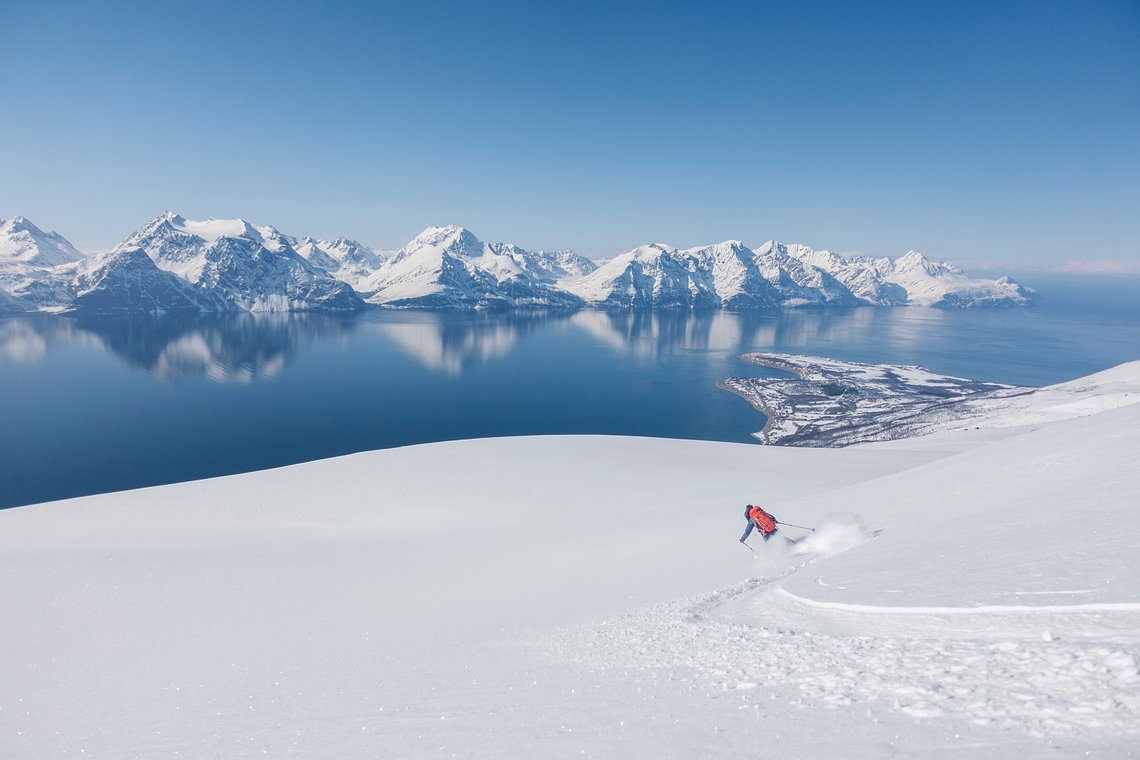
 by Mavi
·
Wed 12 Apr 2023
by Mavi
·
Wed 12 Apr 2023
The Lyngen Alps offer a very special combination of steep Alpine mountains and coastal scenery.
In summer, this Alpine landscape attracts mountaineers and hikers from all over the world. In winter, the Lyngen Alps are known as Norway's finest destination for summit skiing trips. It is home to Jiehkkevárri (1834 meters), exciting mountain flora and a rich birdlife. The Lyngen Alps have protected status in order to preserve this characteristic mountain area, which has more than 140 glaciers. The area has a special geology, as well as cultural relics that tell the story of Sámi, Norwegian and Kven history.
Glaciers and mountain summits
With its glaciers, moraines, valleys and other geological phenomena, the area is one of Norway's most distinctive mountain regions. In many places, the mountain massif has deep valleys that cross the peninsula. The gabbro in the former soafloor that now makes up the mountain range (an example of what is termed an ophiolite) is one of the most extensive examples in Scandinavia. The central Alpine part of the Alps is made up of gabbro and other hard rock types that do not easily erode and weather. The lower-lying areas of the peninsula consist of a number of less resistant rock types, including mica schist, phyllite, dolomite and quartzite.
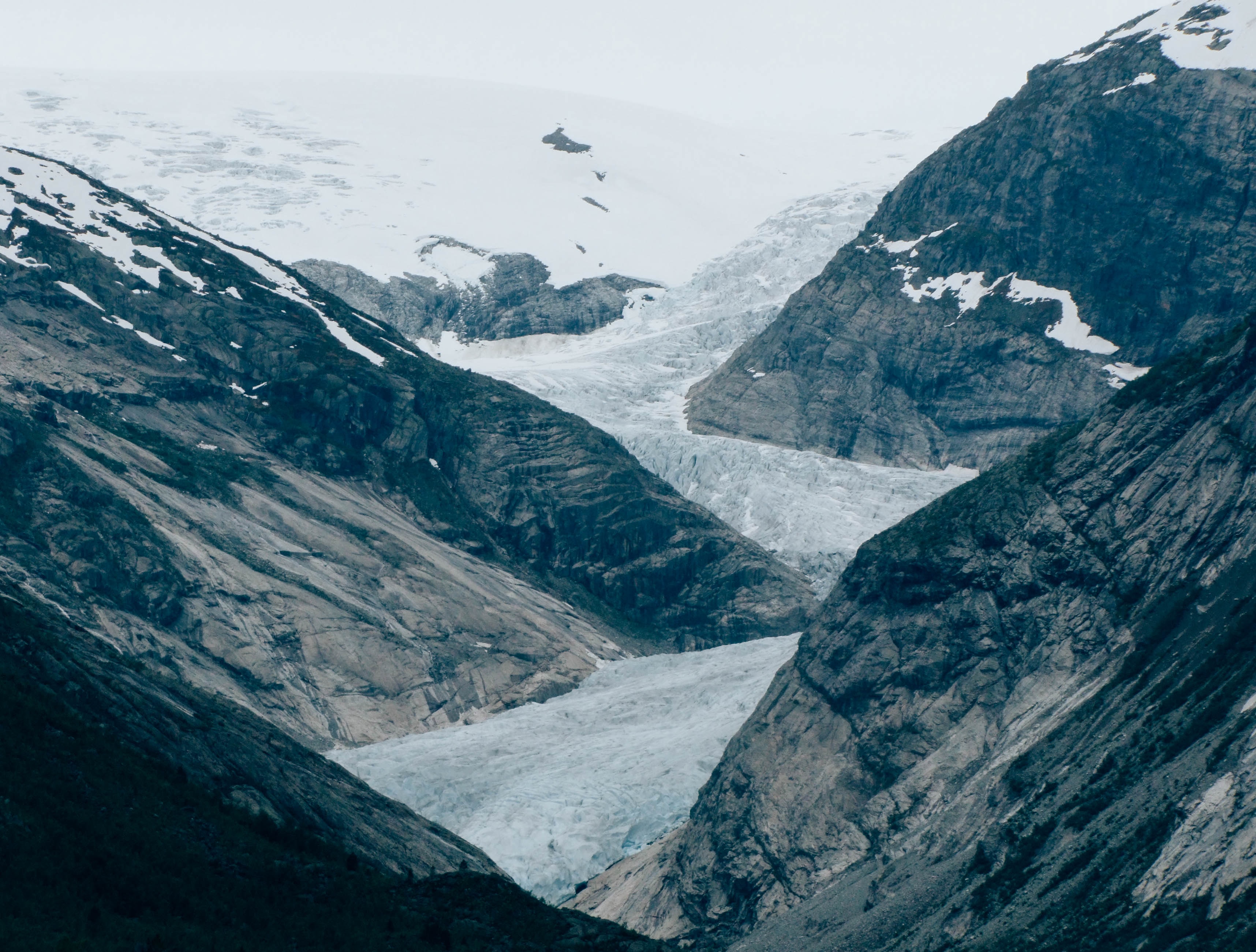
Photo by Andras Toth
Flora and fauna
The Lyngen Alps are characterized by a sparse mountain flora and species-poor Alpine areas. However, even here on the steep, rocky mountainsides and in the deep valleys, there is plenty to discover.
Here you will find distinctive species precisely because of the barren growth conditions on the nutrient-poor bedrock and next to the glaciers. Generally, the southern and eastern sides of the Lyngen peninsula are more fertile than the western and northern sides. Eight species of owl have been observed here, including the snowy owl and Tengmalm's owl, as well as nine species of raptor, including the white-tailed eagle, gyrfalcon and goshawk. Moose can be seen throughout the peninsula and you may also encounter hares, squirrels and red foxes. The Arctic char is the predominant species of freshwater fish in the watercourses.
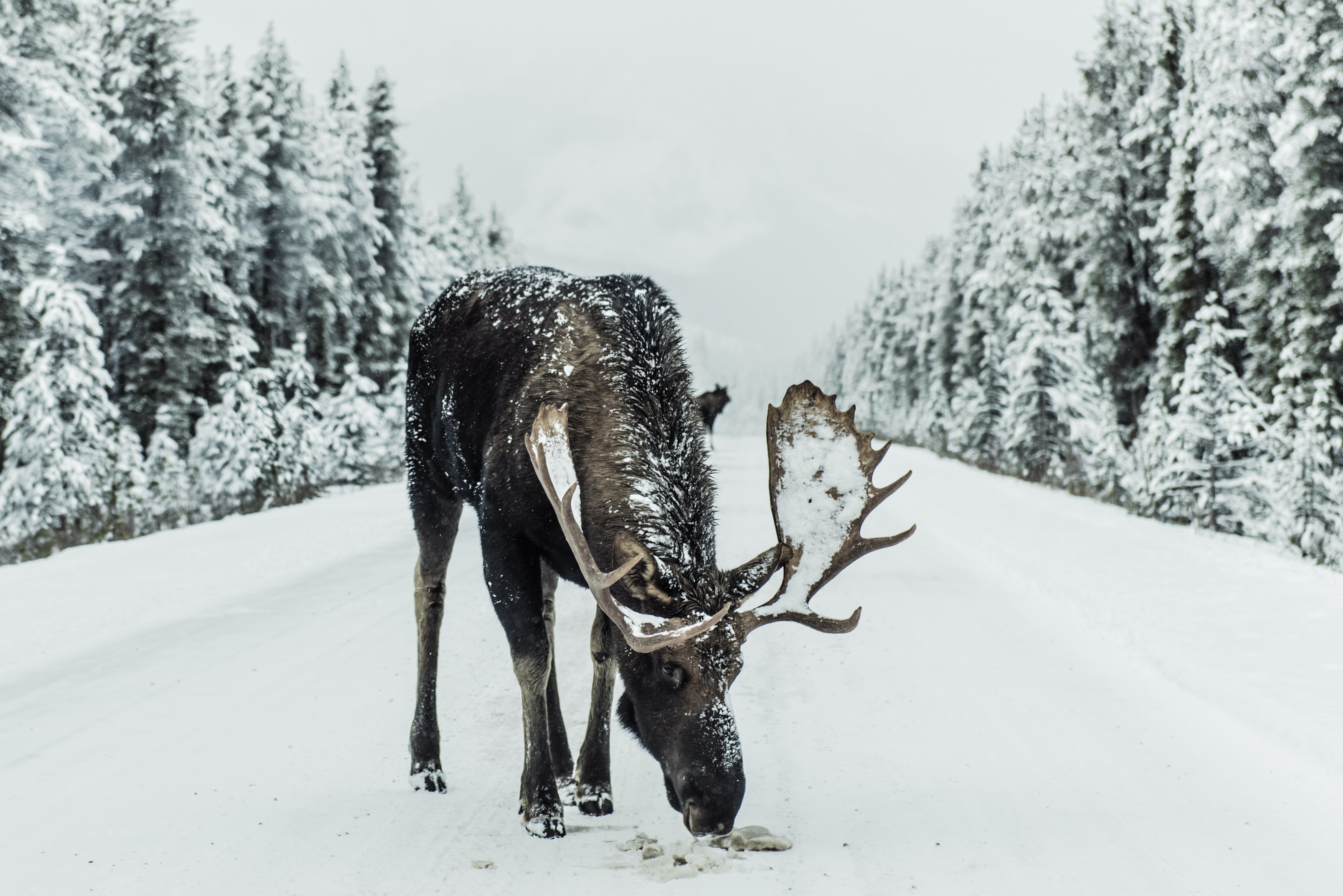
Photo by Ivars Krutainis
The meeting of the three tribes
The population of the peninsula has largely been moulded by the 'Meeting of the Three Tribes', with its Norwegian, Sámi and Kven culture.
Several of the small bays on the peninsula have been permanently inhabited since Neolithic times. The permanent population has lived on a combination of fjord fishing, agriculture and hunting. Because of its proximity to Finland and Sweden, the area has been a border and a meeting place for cultures, people, trade, religion end major powers. Reindeer husbandry has been practiced on the Lyngen peninsula since the 18th century. The Sámi and Kven cultural heritage is evident from the place names and legends throughout the peninsula.
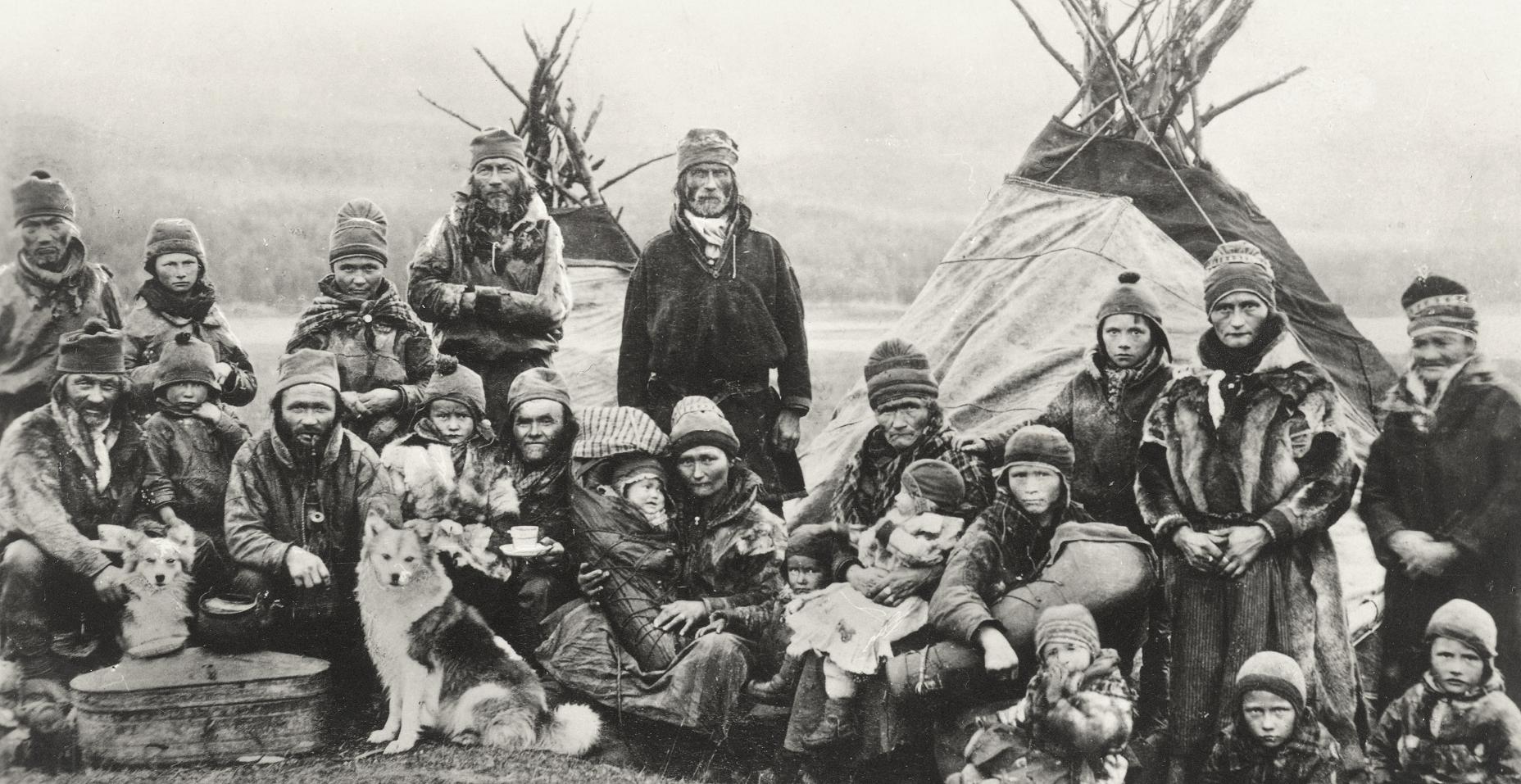
Nordic Sami (Saami) people in Sapmi (Lapland) in front of two Lavvo Tents.
A world of adventure for mountain pioneers
Mountaineers began to take an interest in the Lyngen Alps as early as the mid-19th century. It was not until the end of the 1890s that summit trips came into being and were described by mountain enthusiasts.
The first person to describe a summit trip in the Lyngen Alps was Oscar Vorweg in 1888, when he completed the ascent of Golsevarri (alt, 1.289 m) and Store Kiosoden (alt. 1.488 m). It was not until seven years later than interest in the Lyngen Alps began in earnest. The first ascent of the main summit of the Jiehlikevarri massif (alt 1.834 m) was by Geoffrey Hastings and Elias Holrenning on the night of 4 July 1899. Other well-known pioneers included names such as Elizabeth Main (Mrs Aubrey Le Blond), Peter Wesel Zapffe and Arne Ness. The first summit trips on skis to be described in the Lyngen Alps were over Jiehkkevárri in 1931, by Honrich Steffens Nilsen-Lie and his companion Elstad.
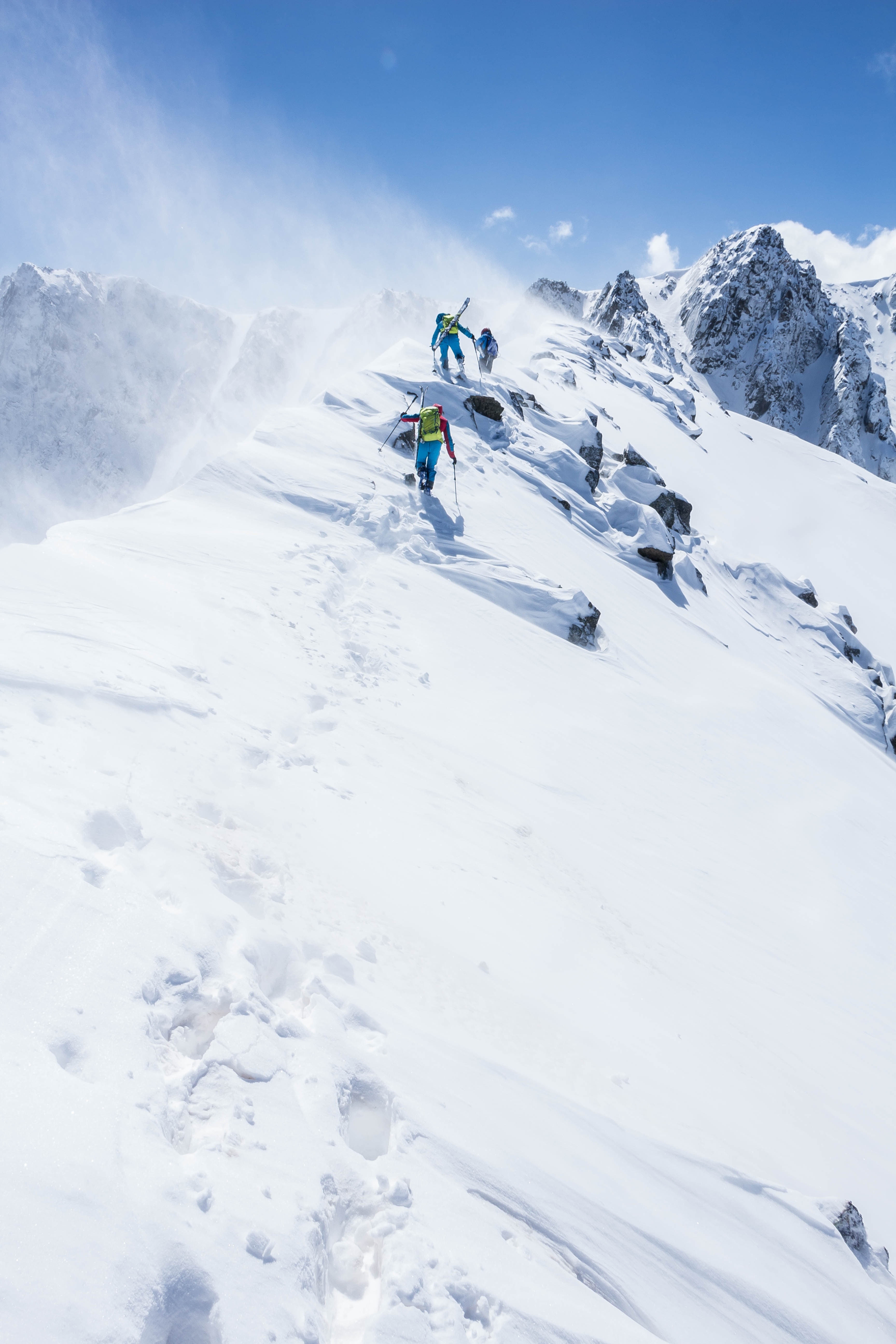
Photo by Guillaume Groult
